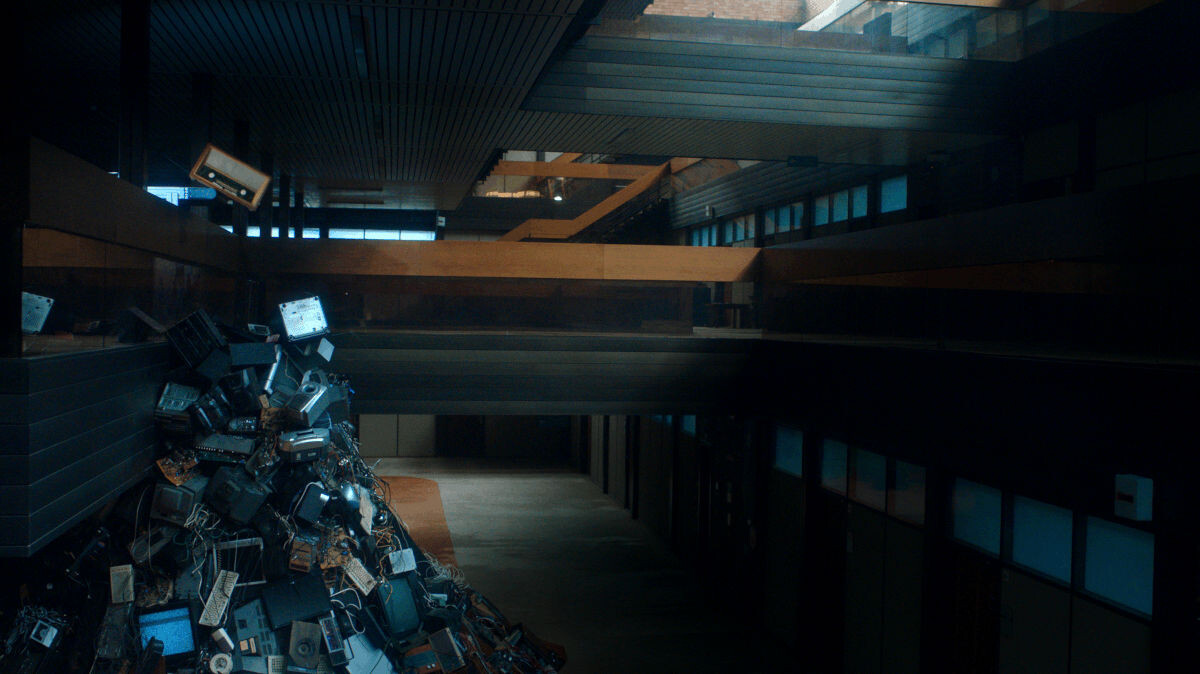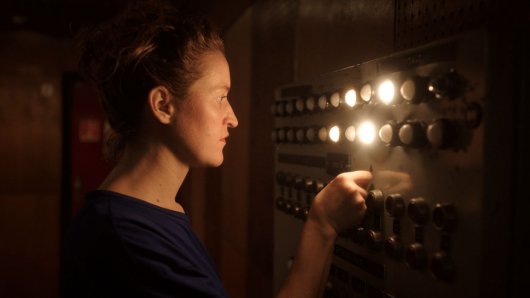On Sounds by Image
Music is not only a passive listening to sound. It is rather complex experience which includes the whole listener´s body and also the space where it takes place, together with technology which makes it become reality. Several speakers in Johana Ožvold´s documentary The Sound Is Innocent repeat this thesis in various modifications. The technology can be represented by any musical instrument or even a trained human voice, an opera singer´s vocal for instance, which can break glass at certain frequency. Thinking about sound and sounds (silence including) in the modern world belongs among noticeable topics of the 20th and 21st century music avant-garde. The film The Sound is Innocent definitely doesn’t aspire to bring a systematic and complex examination of this complicated, abstract and philosophical issue. Instead of this, the film drills it by several component wells linked with different figures of experimental (and) electronic music as well as musical theorists, and one chapter is dedicated to each of them.
At the same time, the documentary transfers physical and technological experience of sound into the film media in a notable way. Extreme emphasis is placed on spatiality. The mise-en-scene of most shots is created by darkened, vast and broken interiors, recording studios, halls or archives, which simultaneously bring the sound and add a specific quality to it. The authors place different types of screens showing “talking heads” of the protagonists into these spaces. The screens might be of old televisions or computer monitors but also walls of the rooms where the film image is projected. Physicality of the sound is thus transformed into a form of images in this audiovisual work. The same goes for the director herself, whose voice speaks authorial comments and who also appears in the film as a visual correlate of a moderator persona – calm, depersonalized presence, slowly walking through spaces of the mise-en-scene as an unconcerned observer. We never see her speak, however, several times we hear her over-voice on the scene where the camera shows her face with a closed mouth.
From the film The Sound Is Innocent
The film has gained its original style mainly thanks to this effort to create corresponding images to the sounds and to bind music to its physical generators and means of their spread. The camera often wanders in long shots through the darkened spaces where it finds screens showing particular speakers. However, it is not only an autotelic effort to make the film special. By showing its images vicariously through other media, the film helps us to create a distance from them. The same distance is established in relation to music and sound by particular speakers when they emphasize that only if we focus on the spatiotemporal situation, in which we listen to something, we will be able to hear qualities of the sound we have not perceived so far. This goes for Steve Goodman from Hyperdub label, who is interested in using sound as a means of repression, and also for Dirty Electronics, the makers of improvised musical instruments.
“Almost a fetishistic fancy in 'memory artefacts', evoking the everydayness of recently past times, points out to correlation of sounds and devices producing them, and thus also to inevitably interconnected ageing of both of them.”
Different media technologies or sound generators thus create an important part of the film images. The beginning of the film already points out to them when it shows old printers, players and other appliances on the assembly line, later on falling over the edge on a growing pile of junk. Almost a fetishistic fancy in “memory artefacts”, evoking the everydayness of recently past times, which was apparent in the older short film by Johana Ožvold called Black Cake (2016), gains a deeper meaning in The Sound Is Innocent. It points out to a narrow correlation of sounds and devices producing them, and thus also to inevitably interconnected ageing of both of them.
However, the film appears rather futuristic than nostalgic. “We express our attitude to the world through the way we treat technology. It is both our responsibility and chance,” says Ožvold at the end of the film in almost a form of a manifest. In fact, the film has rather a retrofuturistic atmosphere enjoying the analogue and beginnings of electronic music. However, that might be its way to span a seeming opposition of the physical and the virtual. The documentary reminds us again and again of the fact that every sound is physiological and every sound technology is somehow physical in the end.
From the film The Sound Is Innocent
The Sound Is Innocent is an exciting film also thanks to its distance from methods of contemporary authorial documentary. But even without this comparison, it is a work which works with its own stylization and topic in a self-confident and inspiring way. It definitely belongs among the most original works created in the field of Czech documentary this year.
Translated by Petra Ocelková


.jpg)

